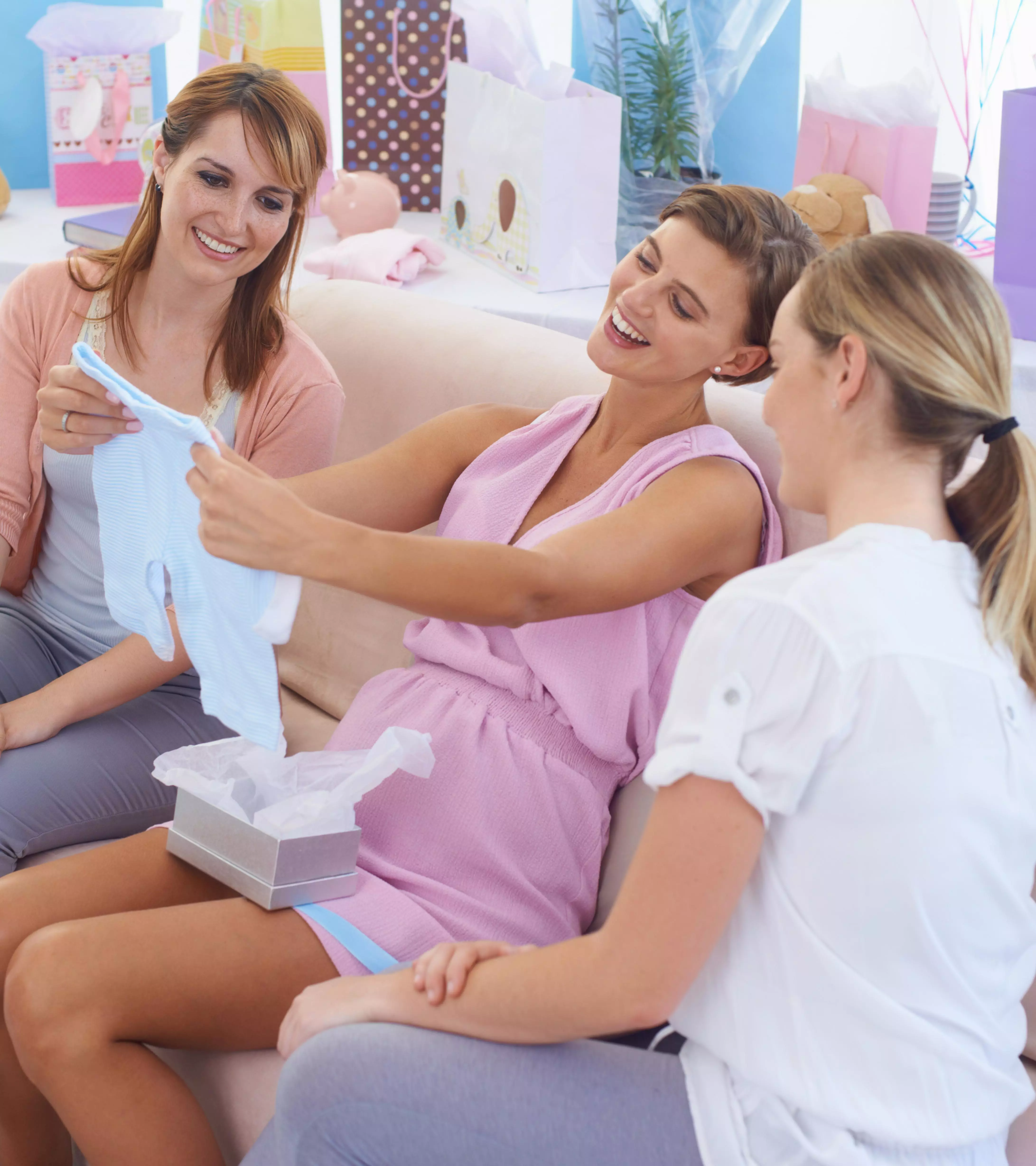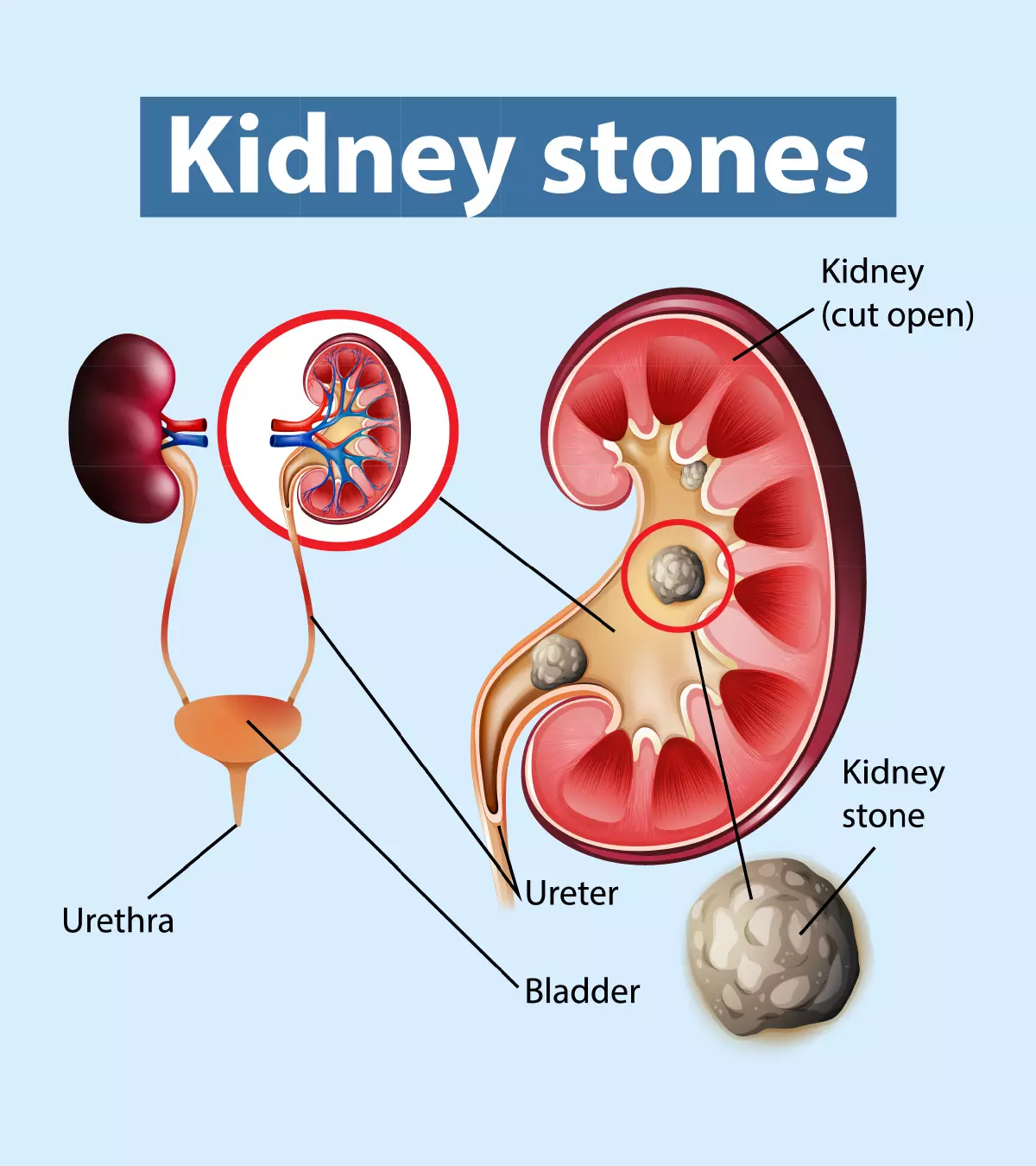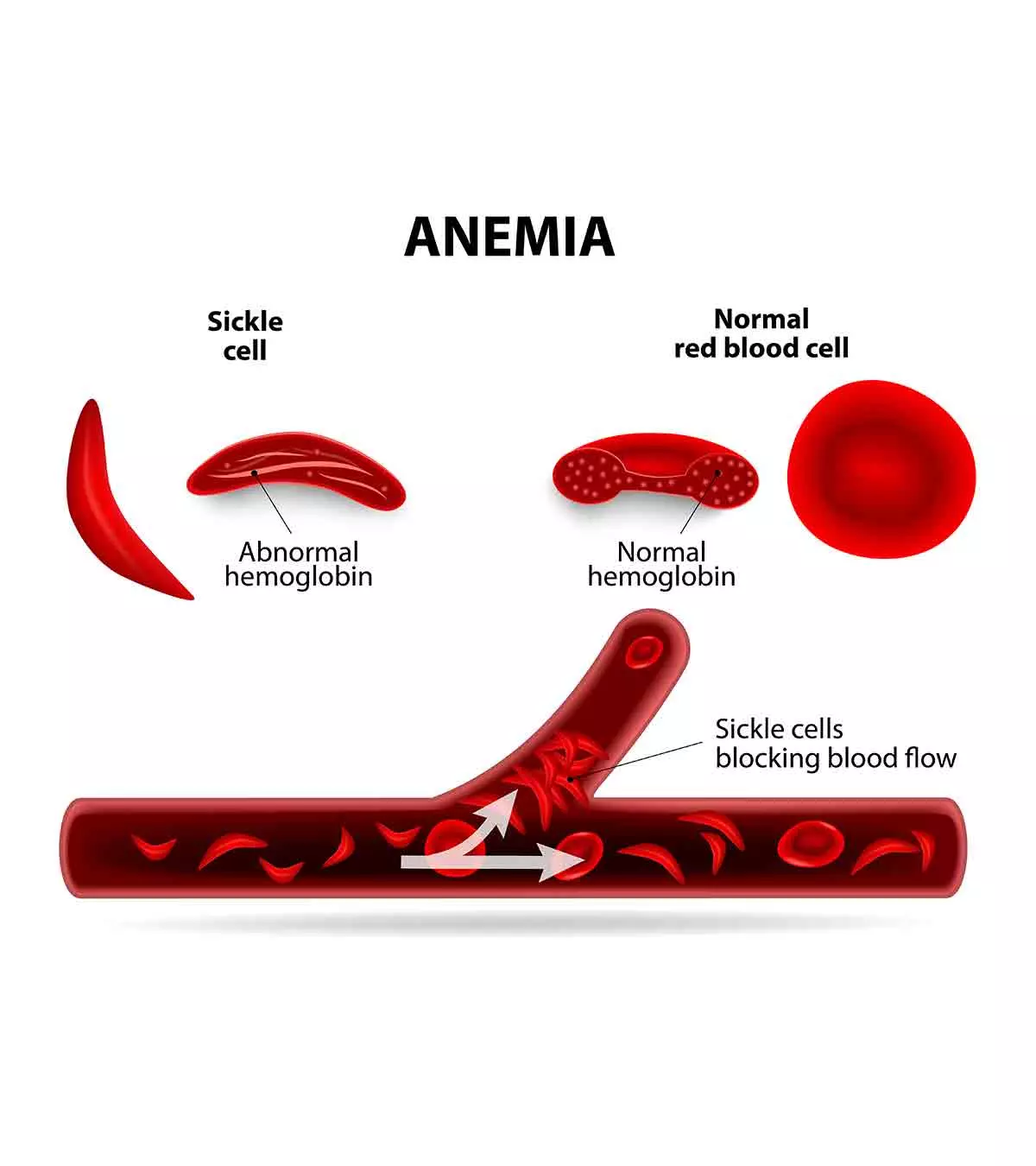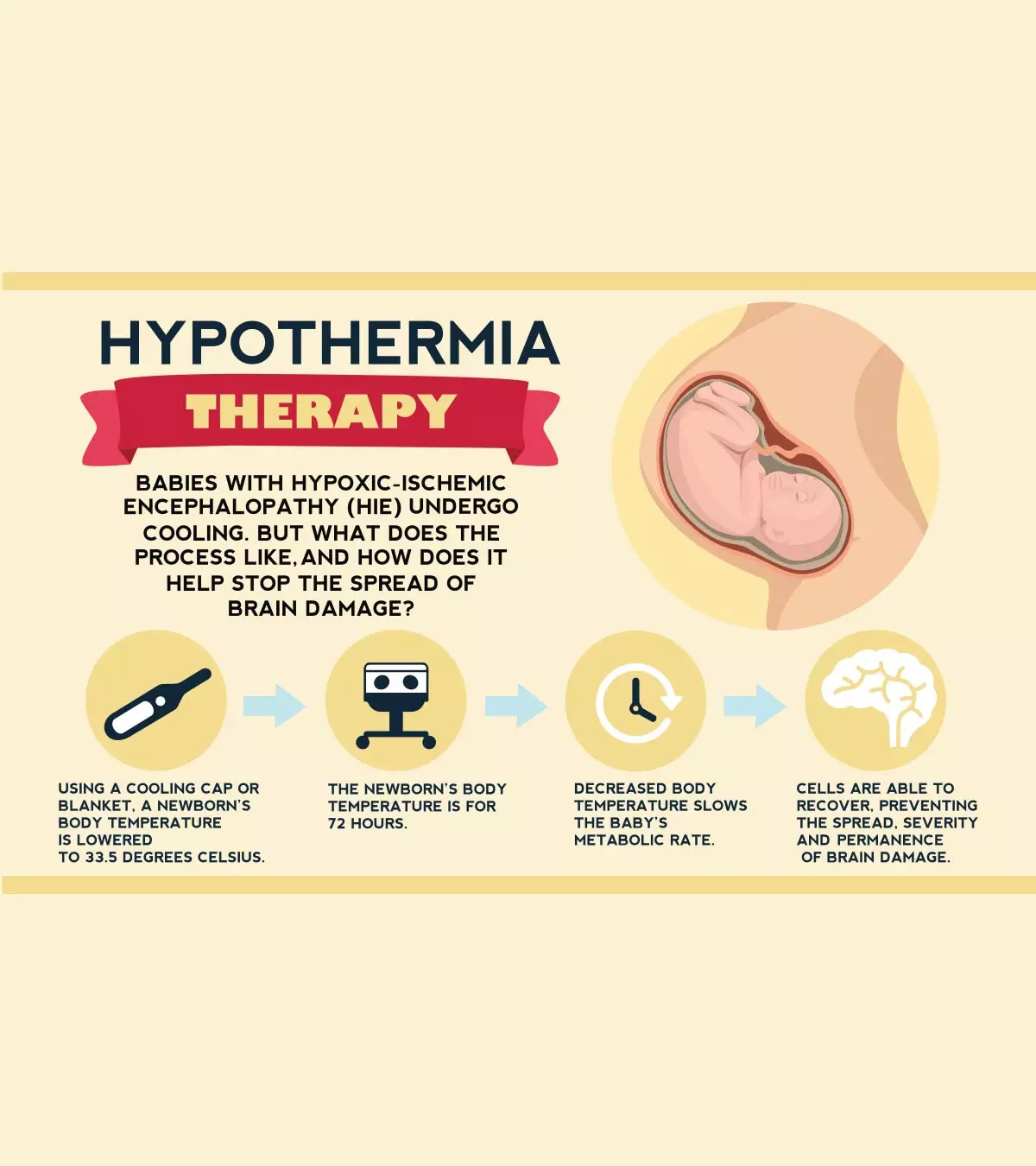

Image: Shutterstock
A pregnancy or prenatal massage is given to pregnant women. It is similar to a normal, full-body massage but with a few changes made for your and your baby’s safety. Massaging helps reduce the pregnancy pains and discomfort several women face when they gain weight. Several pregnant women opt for a pregnancy massage to relieve sore and achy muscles. Besides, it helps relax and calm your mind and body before the baby’s arrival.

Read this post as we tell you about the safety of getting a massage during pregnancy, the right techniques to follow, and the safety precautions you should take to effectively reap the benefits of a prenatal massage.
Is Massage Safe During Pregnancy?
Some mothers may prefer to have pre-natal massages in the second or third trimester or even during labour to help cope with labour pain, but not in the first trimester due to the higher incidence of miscarriages and greater incidence of nausea in the first three months.
In the later stages of pregnancy, some trigger points and techniques may lead to contractions and cause premature labor (1). Only have pre-natal massage if none of the contra-indications or risk factors apply.
Benefits Of Prenatal Massage
Prenatal massage is believed to provide relaxation and a sense of wellness. It is known to be effective in decreasing depression, anxiety, back and leg pain (2). A few other benefits are:
Relieves stress: Pregnancy can be a stressful time for most women. According to the University of Minnesota Health Specialists, prenatal massage therapy can reduce cortisol levels, thereby reducing any stress during pregnancy (3).
Improves sleep: In a study, 26 pregnant women participated in either massage therapy or relaxation therapy for five weeks. The massage therapy group reported better sleep when compared to the relaxation therapy group (4).
Relieves headaches: During pregnancy, women might have migraine headaches because of the hormonal shifts and other reasons such as dehydration. Massage therapy can significantly calm the trigger points and relieve headaches (5).
Reduces swelling: Increased pressure on the blood vessels might result in edema or swelling of the joints. A massage could bring down the swelling by stimulating the soft tissues to lower fluid collection in the swollen joints (6).
Eases heartburn: A light abdominal massage loosens the myofascial tissues, relaxes the nervous system, and relieves pressure in the stomach (7).
Relieves low back pain: Shifting of the center of gravity and the relaxed ligaments and sciatica might result in lower back pain. A prenatal massage could help reduce pain (8).
Improves circulation: Prenatal massage could improve blood circulation to every part of the body, especially to lower extremities, and prevent varicose veins too (9).
Stabilizes hormones: Research reveals that prenatal massage could also activate the feel-good hormones (serotonin and dopamine) and improve your mood (10).
Improves labor outcomes: According to the findings stated in the Expert Review of Obstetrics and Gynecology, women who received prenatal massage had less pain and went through shorter labor with little need for medication (1).
Lowers risk of premature labor: In a research study, pregnant women diagnosed with depression were given massage therapy. It not just helped with reducing depression but also reduced the chances of premature and low birthweight babies (11).
Massage might relieve some pains and relax your body and mind, but as it involves putting pressure on some points, could there be any risks?
Are There Any Side Effects Of Prenatal Massage?
Prenatal massage might have some side effects.
- If you are having nausea and dizziness, then a massage might aggravate them, especially in the first trimester.
- While some people believe that prenatal massage in the first trimester could result in miscarriage, there isn’t enough evidence to substantiate it.
Note that you need to get the massage done by a certified massage therapist or licensed massage therapist, who has experience in prenatal massage.
How Is Prenatal Massage Different From A Typical Massage?
Prenatal massage differs from a general massage in terms of the pressure points that are stimulated by the masseuse. A general massage therapy session is modified in the following ways to make it safer and comfortable for pregnant women (12):
- In addition to the back, the abdomen may be gently massaged to increase the moisture and elasticity of the abdominal skin to reduce stretch marks.
- Abdomen and pressure points along the ankle, foot, and sacrum are not used as they cause contractions or induce labor.
- Essential oils such as clary sage, rosemary, and cinnamon that are considered unsuitable during pregnancy are avoided.
- Deep tissue pressure is not applied so as not to harm your baby
- Swedish massage style is practiced using pillows, bolsters, and other supporting accessories to provide you comfort. It uses long strokes to the tight muscles and focuses on joint mobility (13).
A good pregnancy massage is customized to your preferences and the specific requirements of your body. Keep reading to find out how it works.
What Happens During A Prenatal Massage?
Here is what you can expect to happen during a prenatal massage.
- During second and third trimester, you cannot lie flat on your back for a massage due to enlarged abdomen and pressure on your breathing, as you approach full term. At this time it is easier to iel on your side well supported with cushions under your belly and between your legs.
- Your massage therapist usually begins with the neck, shoulders, head, and move down the arms and legs.
- You might be asked to roll onto one side, a position that you can stay in with the help of support pillows. In this position, you will be spending about two-thirds of the total time.
- The complete massage usually lasts for 60 minutes, but sometimes it can go up to 90 minutes.
When Should You Avoid A Prenatal Massage?
Avoid getting a if you have any back injuries, such as fracture, strain, fused vertabrae, which requires medical attention. You should also avoid a massage if:
- Your pregnancy falls under the high-risk category
- You have an irritable uterus or any signs of premature labor
- You have allergic reactions to the massage oils
- You have pregnancy-induced hypertension or preeclampsia
- You have a bone fracture or a blood clot
- You have a skin condition or injury such as open wounds, burns, eczema, or any other skin infection
- Getting a massage makes you feel lightheaded, sick or gives you a headache
- You feel the massage is too vigorous. In this case, communicate with the masseur to be gentle
Can You Try Prenatal Massage At Home?
You may ask your partner or any other family member to do the massage. You may check some online videos or pick an instructional manual on prenatal massage. It may not be as thorough as a professional massage but will help you relax. However, it cannot be done on the sensitive parts, and the person massaging you should be careful not to put any unnecessary pressure. You may also try this five-minute fix for yourself:
Choose a quiet place at home. Sit down and close your eyes. Gently roll your head in every direction, and then circularly massage your temples. Take deep breaths as you do it. Next, rest on your back and stretch your arms over the head. Get the arms to your sides and continue to breathe deeply.
Next, we answer some frequently raised queries on prenatal massage.
Frequently Asked Questions
1. Can massage during pregnancy induce labor?
Massage can trigger the oxytocin hormone in the body, which could bring the labor contractions. Massage in the early stages of labor could help reduce the overall labor duration (14).
2. How late in pregnancy can I get a massage?
You can get a prenatal massage any time after the first trimester up to the active phase of labor, and until your body supports and feels comfortable with it.
3. What should I wear to a prenatal massage?
You may wear any loose clothing that makes you feel comfortable. Your massage therapist will ideally cover you with towels during the massage and expose only the body part that is being massaged.
4. Can I sit in a massage chair while pregnant?
Sitting on a massage chair may help relax the extra pressure on your back during pregnancy. However, remember to keep the vibration low and check with your doctor before using it. Following your doctor’s advice will keep you safe during pregnancy.
Prenatal massage is similar to regular body massage; however, modifications are made not to trigger the pressure points that can lead to contractions. The entire session takes about an hour and may help you feel rejuvenated and relaxed if done correctly. Women generally prefer prenatal massage during the second and the third trimesters, which is considered a safe period. Regular massage may reduce swelling, relieve headache, and ease heartburn. However, since all pregnancies are different, some women may experience dizziness and nausea after the massage. Avoid getting a massage if you have a high-risk pregnancy, bone fracture, or open wound. Always consult your doctor before getting a prenatal massage.
Key Pointers
- Prenatal massage relieves stress, improves sleep, and reduces swelling in pregnant women.
- However, it could aggravate nausea and dizziness in the first trimester.
- A prenatal massage is different from a regular one since only specific pressure points that are safe to be stimulated in pregnant women are massaged.
- Avoid prenatal massage if your pregnancy falls in the high-risk category.
References
1. Susan G. Salvo; Mosby’s Pathology for Massage Therapists; Page 384
2. Tiffany Field; Pregnancy and labor massage; Expert Rev Obstet Gynecol (2011)
3. Five Things You Should Know About Prenatal Massage; University of Minnesota Health
4. Field T et al.; Pregnant women benefit from massage therapy; J Psychosom Obstet Gynaecol (1999)
5. Pfaffenrath V and Rehm M; Migraine in pregnancy: what are the safest treatment options; Drug Saf (1998)
6. Zainal Zainuddin et al.; Effects of Massage on Delayed-Onset Muscle Soreness, Swelling, and Recovery of Muscle Function; J Athl Train (2005)
7. Elaine Stillerman; Prenatal Massage – E-Book: A Textbook of Pregnancy, Labor, and Postpartum Bodywork; Page 215
8. Michele Preyde; Effectiveness of massage therapy for subacute low-back pain: a randomized controlled trial; Canadian Medical Association Journal (2000)
9. Gordon Inkeles; Massage for a Peaceful Pregnancy: A Daily Book for New Mothers and Fathers
10. Field T et al.; Cortisol decreases and serotonin and dopamine increase following massage therapy; Int J Neurosci (2005)
11. Can Clinical Massage Help With Nerve Injury; The Soma Institute
12. Prenatal Massage: An Infant and Mother’s first Touch; Fremont College
13. What Is a Swedish Massage; Fremont College
14. Ebrahim Hosseini et al.; Effect of Massage Therapy on Labor Progress and Plasma Levels of Cortisol in the Active Stage of First Labor; Zahedan Journal of Research in Medical Sciences
Community Experiences
Join the conversation and become a part of our nurturing community! Share your stories, experiences, and insights to connect with fellow parents.
Read full bio of Annette Bing
Read full bio of Rebecca Malachi














